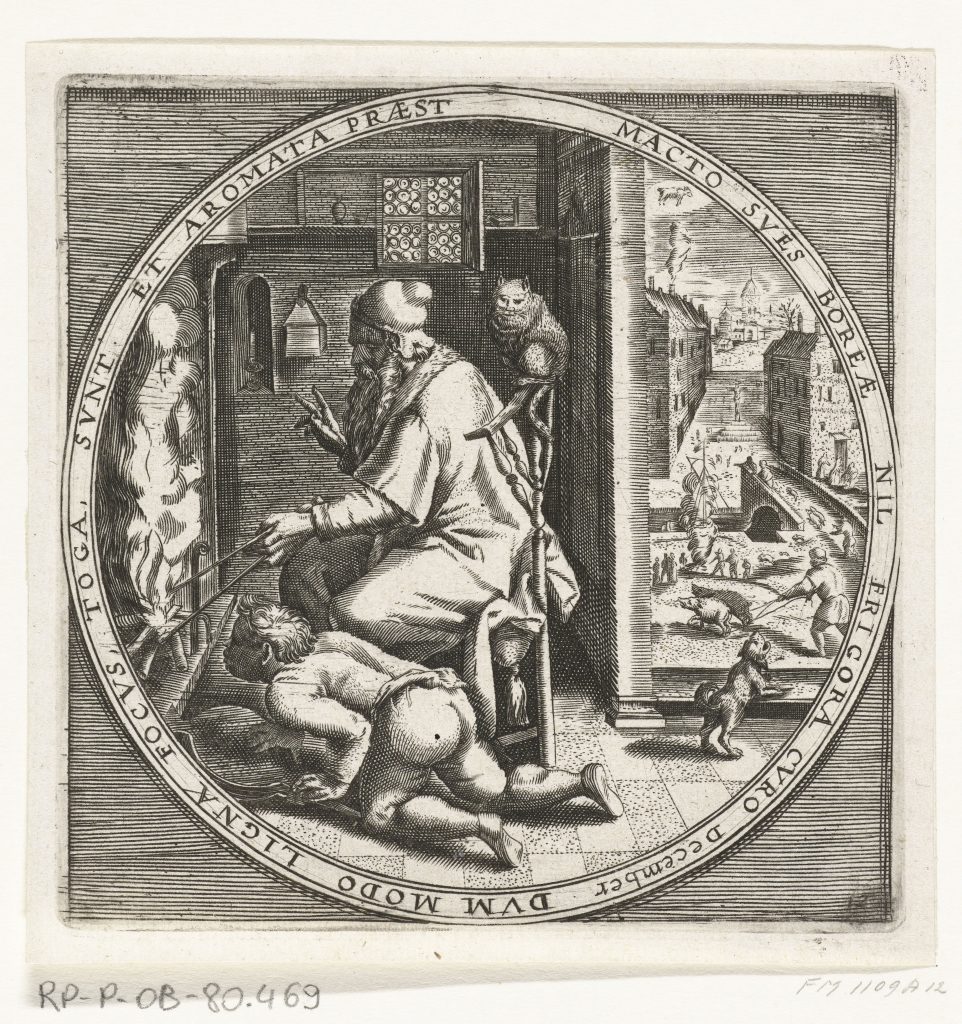
17th Century Almanac for February
The 17th Century almanac for February – the month of Candlemas, carnival and chaos. ‘The sun peeps through the window-pane; which children mark with laughing eye, and in the wet street steal again, to tell each other Spring is nigh.’
17th Century Life, Candlemas & Cod
In the 17th Century, February started with Candlemas, on the 2nd. This Catholic celebration of the Virgin Mary remained a feast day in the reformed Church of England calendar. In the secular year, it was a ‘cross-quarter day’ when the killing of rabbits and hunting of deer, sources of fresh meat in winter, stopped. It was also a hiring day. A day when labourers were forced to queue in marketplaces hoping to be hired for employment over the coming months.
For most, February was a harsh month working on the land in winter. It was a time for spreading muck and ploughing in last year’s stubble. Wheat and rye fields needed to be harrowed, and peas and beans sowed. The new sown crops had to be protected from hungry birds until covered by harrowing. This was done by boys with sticks. They must have frozen, standing in the big open fields on a cold windy, winter’s day. This was also the month when the Newfoundland cod fleet set sale again. As many as 5,000 men sailed from England’s ports, not to return until November.
The Lenten Moon & Shrovetide
Almost all of this activity was dictated by the state of the moon. For those who still follow the old cycles, the new Lenten Moon will rise on the 9th and be full on the 24th of February. Thomas Tusser reminds us, in his Five Hundred Points of Husbandry, that any planting or sowing should be done on a waxing moon, between these dates. Today, we call this biodynamics.
The moon still dictates the date of Easter. It will be Shrove Tuesday on the 13th of February. ‘Shrovetide’ was a feast day for ploughmen, when they were fed on hen, fritters and pancakes. It was a last meal of all that was left at the end of winter. After Shrovetide, families rarely had more left than a Lenten diet of salt-fish, barley gruel, leeks and a few eggs.
Carnival, Court Masques & London Apprentices
But Shrovetide was also marked by carousing, gaming and chaos. It was a day for fun and games. Huge, often violent football matches were played between villages. At Court, Charles I and Queen Henrietta Maria hosted lavish masques. These echoed the February carnivals of Catholic Europe that continue in Venice and as Mardi Gras today.
In London, apprentices ran amok, stoning constables, tearing down theatres and ransacking brothels. This was seen by some as a righteous cleansing. It probably had more to do with the venting of suppressed youth given neither the time, money or licence to enjoy their pleasures. Parliamentary Ordnance closed the theatres from 1642. The Court masques ended and Cromwell suppressed the games. Today, Valentine’s Day remains as a final fling of February fun.
The General Crisis of the 17th Century
It is so easy to forget how tough conditions were for most in 17th Century Britain and how close the system was to collapse. Ultimately, climate change – in the form of the Little Ice Age – reaped havoc amongst communities that were already struggling. The result was the most violent decade in global history. The 1640s saw conflict across the entire Northern Hemisphere, from Japan to the Americas.
Personally, I am fascinated by the 17th Century. But I am eternally grateful not to be trying to live in that age. I will spend February wrapped up, relatively well fed and at my desk writing.
In the meantime, I hope none of you are forced to guard a field of new sown beans with a stick, woollen hand-me-downs and an empty belly. Whether you are spreading muck, ploughing an old furrow or setting forth to a newfound land, I wish you winter sun. ‘Spring is nigh’.
Follow & Read More
I will post more of the 17th Century Almanac and yearly activity in Early Modern Britain, next month. If you would like to receive an email notification of the next post, click the button to follow.
In the meantime, this website includes more posts and articles about life in 17th Century Britain, Europe and the Americas at Historical Notes and Maps. These include notes and pages on the impact of the Little Ice Age and The General Crisis of the 17th Century. They include articles on the English Revolution and Great Rebellion. They also include Pike and Shot Warfare and battles of the English Civil War.
You can also find more posts on Early Modern history, Living History and re-enactment at News & Events. You may also wish to read about the English Civil War history talks and battlefield walks I give.
See More & Share
Alternatively, check out Facebook, Instagram, Twitter or YouTube for more posts. These include notes from my historical research, Living History and English Civil War fiction. They also include upcoming events and opportunities to meet. Or, follow on social media at #DividedKingdomBooks or #EnglishCivilWarFiction on:
If you want even more, join us in the Divided Kingdom Readers’ Club. Clubmen receive FREE access to exclusive short stories, email and more. Click the link to sign up and join us.
Spread the Word
If you like what you see, please click, share and spread the word via email or your social media on:





